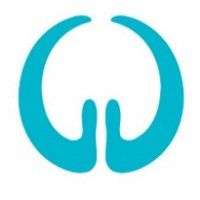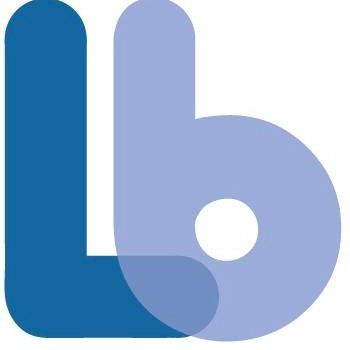预约演示
更新于:2025-05-07
Acute schizophrenia
急性精神分裂症
更新于:2025-05-07
基本信息
别名 Acute Schizophrenia、Acute schizophrenia、acute schizophrenia + [4] |
简介- |
关联
17
项与 急性精神分裂症 相关的药物作用机制 M1 receptor激动剂 [+2] |
非在研适应症- |
最高研发阶段批准上市 |
首次获批国家/地区 美国 |
首次获批日期2024-09-26 |
作用机制 5-HT1A receptor激动剂 [+2] |
最高研发阶段批准上市 |
首次获批国家/地区 美国 |
首次获批日期2015-09-17 |
作用机制 5-HT1A receptor激动剂 [+2] |
在研机构 |
最高研发阶段批准上市 |
首次获批国家/地区 美国 |
首次获批日期2015-07-10 |
72
项与 急性精神分裂症 相关的临床试验NCT06589817
A Phase 3, Multicenter, Randomized, Double-blind Study to Evaluate the Efficacy and Safety of Hydrochloride Carliprazine Capsules or Aripiprazole Tablets for the Treatment of Acute Schizophrenia Subjects
This is a non-Inferiority trial to evaluate efficacy and safety of hydrochloride carliprazine capsules and aripiprazole tablets in treating acute schizophrenia in Chinese adults. 376 patients will be randomizdely assigned in a 1:1 ratio to treatment group and control group. All enrolled subjects will be orally administered with hydrochloride carliprazine capsules or aripiprazole tablets for 6 consecutive weeks.
开始日期2024-10-01 |
申办/合作机构 |
CTR20240938
一项评价盐酸卡利拉嗪胶囊用于治疗成人急性期精神分裂症的疗效和安全性的多中心、随机、双盲、双模拟、阳性对照III期临床试验
主要目的是评价浙江京新药业股份有限公司研制的盐酸卡利拉嗪胶囊1.5~6 mg/日剂量下治疗成人急性期精神分裂症患者的疗效。次要目的为评价浙江京新药业股份有限公司研制的盐酸卡利拉嗪胶囊1.5~6 mg/日剂量下治疗成人急性期精神分裂症患者的安全性。
开始日期2024-03-29 |
申办/合作机构 |
NCT06179108
A Randomized, Double-blinded, Placebo-controlled, Multicenter Study to Evaluate the Antipsychotic Efficacy and Safety of LB-102 in the Treatment of Adult Patients With Acute Schizophrenia
This is a Phase 2, randomized, double-blind, placebo-controlled, multi-center inpatient study to evaluate the efficacy and safety of LB-102 in adult patients diagnosed with acutely exacerbated schizophrenia. To determine whether LB-102 administered to patients with acutely exacerbated schizophrenia demonstrates antipsychotic efficacy, as determined by a change from Baseline on the Positive and Negative Syndrome Scale (PANSS) total score, compared to placebo at 28 days. The secondary objectives of the study are to evaluate improvement in CGI-S, safety and tolerability, and pharmacokinetics.
开始日期2023-11-29 |
申办/合作机构 |
100 项与 急性精神分裂症 相关的临床结果
登录后查看更多信息
100 项与 急性精神分裂症 相关的转化医学
登录后查看更多信息
0 项与 急性精神分裂症 相关的专利(医药)
登录后查看更多信息
1,515
项与 急性精神分裂症 相关的文献(医药)2025-05-01·European Neuropsychopharmacology
Frequency, correlates and outcomes of Benzodiazepine use during Cariprazine treatment: A pooled post-hoc analysis from four 6-week, placebo-controlled trials in patients with an acute exacerbation of schizophrenia
Article
作者: Csehi, Réka ; Acsai, Károly ; Barabássy, Ágota ; Correll, Christoph U
2025-04-01·The Lancet Psychiatry
The trajectory of sedative adverse events caused by antipsychotics: a meta-analysis of individual participant data from randomised, placebo-controlled, clinical trials in acute phase schizophrenia
Article
作者: Brandt, Lasse ; Priller, Josef ; Nomura, Nobuyuki ; Efthimiou, Orestis ; Leucht, Stefan ; Park, Jinyoung ; Siafis, Spyridon ; Schneider-Thoma, Johannes ; Takeuchi, Hiroyoshi ; Davis, John M
2025-04-01·The Pharmacogenomics Journal
Genetic markers of early response to lurasidone in acute schizophrenia
Article
作者: Alliey-Rodriguez, Ney ; Yoshikawa, Akane ; Li, Jiang ; Meltzer, Herbert Y
59
项与 急性精神分裂症 相关的新闻(医药)2025-03-31
Treatment with LB-102 resulted in a positive shift in disease severity as measured by mean change from baseline in Clinical Global Impression of Severity (CGI-S) scores Phase 3 clinical trial of LB-102 in acute schizophrenia expected to initiate in Q4 2025 NEW YORK, March 31, 2025 (GLOBE NEWSWIRE) -- LB Pharmaceuticals Inc., a clinical-stage biopharmaceutical company developing novel therapies for the treatment of neuropsychiatric diseases including schizophrenia, today presented additional positive data from NOVA1, a Phase 2 clinical trial of LB-102 in acutely exacerbated schizophrenia patients, at the 2025 Annual Congress of the Schizophrenia International Research Society (SIRS) being held in Chicago, Illinois, from March 29 to April 2, 2025. As previously reported the primary endpoint of NOVA1, a clinically meaningful change in Positive and Negative Syndrome Scale (PANSS) total score at week 4, was achieved with a high degree of statistical significance at all doses. The study also measured mean change from baseline in Clinical Global Impression of Severity (CGI-S) score, which rates illness severity on a scale from 1 (normal) to 7 (extremely ill) and has been shown to correlate with PANSS, as a secondary endpoint. At week 4 of the study, participants treated with the 50 mg dose (n=107) achieved a mean change in baseline CGI-S score of -0.72 compared to placebo (p=0.0008). Those who received the 75 mg dose (n=108) achieved a mean change in baseline CGI-S score of -0.67 compared to placebo (p=0.0048). Treatment with the exploratory dose of 100 mg (n=36) resulted in a mean change in baseline CGI-S score of -0.84 compared to placebo (p=0.0026). "The significant improvement in CGI-S scores observed in NOVA1 reinforces that LB-102 may provide a meaningful clinical impact on disease severity and further validates its strong potential as a next-generation treatment for schizophrenia,” said Heather Turner, Chief Executive Officer of LB Pharmaceuticals. “These results support our vision for LB-102 as a therapy that provides a compelling balance of efficacy and safety, addressing the urgent need for better-tolerated, efficacious therapies for people with schizophrenia. As we advance toward the initiation of a Phase 3 clinical trial in Q4 2025, this data strengthens our confidence in LB-102 as a first-in-class benzamide antipsychotic in the United States.” Treatment with LB-102 was generally safe and well-tolerated. The most common adverse events were insomnia, headache, anxiety, and agitation, consistent with existing antipsychotics. Increases in prolactin were observed with few clinical adverse events associated with those increases. Modest weight gain was also observed but was not associated with a clinically meaningful signal in metabolic parameters. John M. Kane, M.D., Professor of Psychiatry and Molecular Medicine at the Donald and Barbara Zucker School of Medicine at Hofstra/Northwell, the Co-Director of the Institute for Behavioral Science at the Feinstein Institutes for Medical Research, and the Principal Investigator of NOVA1, added, “These CGI-S scores are compelling. In combination with the statistically significant change from baseline in the PANSS total scores, the findings of NOVA1 reflect the potential real-world clinical impact of LB-102 on patients with acute schizophrenia. While PANSS scores provide a structured measure of symptom changes, CGI-S offers an independent, clinician-driven, assessment of overall disease severity. The meaningful reductions in CGI-S scores suggest that study participants are experiencing not just statistical improvement, but tangible, clinically relevant benefits that could translate to better daily quality of life. Given the ongoing need for effective and well-tolerated treatment options, these findings further support the potential of LB-102 to help address a critical gap in schizophrenia care.” About NOVA1The Phase 2 randomized, double-blind, placebo-controlled, multi-center inpatient trial enrolled 359 adults, age 18 to 55 with DSM-5 diagnosis of acutely exacerbated schizophrenia. The trial evaluated the efficacy and safety of a once-daily oral dose of LB-102. The primary objective of the study assessed the efficacy of LB-102 versus placebo in reducing Positive and Negative Syndrome Scale (PANSS) total scores at day 28. The secondary objectives of the study included improvement in CGI-S, PANSS subscale and Marder Factor scores, safety and tolerability, and pharmacokinetics. Randomization was approximately 3:3:3:1 as participants received either placebo, 50 mg QD LB-102, 75 mg QD LB-102, or 100 mg QD LB-102. About LB-102LB-102 is a potent antagonist of dopamine D2/3 and 5HT7 receptors with low off-target activity. In a Phase 2 clinical study of once-daily orally administered, LB-102 meaningfully improved symptoms of schizophrenia. A Phase 3 clinical study is planned to begin later in 2025. Based on the mechanism of action and preclinical studies, clinical trials of LB-102 are being planned in bipolar depression, predominantly negative schizophrenia, and Alzheimer’s agitation/psychosis, in addition to other psychiatric indications. The first of these studies is expected to begin in 2026. If approved, LB-102 would be the first benzamide in the U.S. to treat psychiatric disorders. About LB PharmaceuticalsLB Pharmaceuticals is a clinical-stage biopharmaceutical company developing novel therapies for the treatment of neuropsychiatric diseases, including schizophrenia. The company’s lead candidate, LB-102, is a potential first-in-class benzamide antipsychotic in the U.S. designed to address critical gaps in the current standard of care by providing comprehensive disease management with a generally safe and tolerable profile. LB Pharmaceuticals is backed by institutional investors Deep Track Capital, TCGx Crossover, Vida Ventures, and Pontifax. To learn more, visit our website at https://lbpharma.us/. Media Contact: Michael Fitzhugh LifeSci Communications mfitzhugh@lifescicomms.com
临床2期临床结果
2025-01-22
MIAMI LAKES, Fla.--(
BUSINESS WIRE
)--Segal Trials, a privately held clinical research network specializing in acute schizophrenia and other psychiatric disorders, has released enrollment performance metrics from their participation in NOVA - a Phase 2 dose finding trial in adult patients with acute schizophrenia evaluating LB-102, a once-daily orally administered small molecule and potential first-in-class benzamide antipsychotic.
Sponsored by NYC-based LB Pharmaceuticals, Inc., the study’s positive topline results were presented at the 43
rd
Annual J.P. Morgan Healthcare Conference on January 13
th
. Having met its primary endpoint, the study showed LB-102 to be efficacious, generally safe, and well-tolerated over the course of the 4 week treatment period.
“Despite available medications for schizophrenia, many patients continue to suffer from the burden of untreated symptoms or suffer tolerability issues,” said Rishi Kakar, M.D., Chief Scientific Officer at Segal Trials and investigator on the Phase 2 trial. “LB-102 study data is very encouraging and highlights the potential of this novel once daily option to address large unmet need.”
Enrollment Performance
Two Segal Trials investigators, Rishi Kakar, MD and Olga Lapeyra, MD, accounted for 18% of the total sample size in the Phase 2 study. A consistent top-enroller in acute schizophrenia clinical trials, Segal Trials contributed to the study sample size with a rate of randomization of 8 subjects per month over the course of 7 months at a measure of 147% over their contracted enrollment goal.
“Being a consistent lead enroller in acute schizophrenia trials is a testament to our community based outreach and patient centric approach,” said Bonnie Segal, President of Segal Trials. “It’s particularly rewarding when these efforts lead to positive study outcomes.”
Miami Lakes Medical Research
Founded in 1998, Segal Trials cut ribbon at Miami Lakes Medical Research in 2019 in response to the urgent need for research space in acute psychiatric populations. The site is a 10,000 sq ft. free-standing facility dedicated full-time to clinical research, and was designed to allow for flexibility in the execution of the ever more complex clinical trials of today. Segal Trials’ Miami Lakes Medical Research is fitted with 29 beds in a controlled-access research unit across two (2) separate research wings that segregates special populations from one another. As a wholly-owned building, Segal Trials reserves the ability to configure the unit to accommodate various populations and study designs based on need. Since opening their doors the site has enrolled more than 800 subjects across 50 unique clinical trials.
Looking Ahead
In accordance with the positive topline results, LB Pharmaceuticals plans to engage with the U.S. Food & Drug Administration (FDA) to finalize Phase 3 trial design by early 2026.
Schizophrenia affects approximately 1% of the global population, with many individuals experiencing episodes of acute psychosis that significantly impact their quality of life. Current treatment options, while effective for many, leave a significant portion of the patient population underserved, highlighting the urgent need for innovative therapeutic alternatives like LB-102.
Segal Trials is currently accepting new enrollees on their clinical studies and evaluating new studies with sponsors. For more information about Segal Trials, or to schedule an interview, please contact Segal Trials at
marketing@segaltrials.com
.
About Segal Trials
Segal Trials is a leading clinical research network specializing in the study of psychiatric and neurological conditions. Founded in 1998, Segal Trials operates multiple state-of-the-art facilities in South Florida, dedicated to high-quality clinical trials aiming to advance medical science and improve patient outcomes. For more information and to learn about opportunities to participate in clinical trials, visit their website at
www.segaltrials.com
.
临床2期临床结果
2025-01-13
·药研网
据彭博社报道,强生正在考虑收购CNS制药商Intra-Cellular Therapies。双方最早可能在本周达成协议。据估值,Intra-Cellular 的市值约为 100 亿美元。
Intra-Cellular Therapies成立于2002年,是一家专注于中枢神经系统(CNS)疾病疗法开发和商业化的生物制药公司,公司在2024年4月完成了5.75亿美元的公开募股,显示出其在资本市场上的强劲表现和未来发展潜力。
Intra-Cellular Therapies 的首款自主产品Caplyta,用于治疗急性精神分裂症。与2023年同期相比,Caplyta在2024年第三季度的销售额增长了39%,达到1.75亿美元。
管线中进度较快的产品Lumateperone已提交监管审批,拟用于治疗双相情感障碍以及与痴呆症(包括阿尔茨海默病)相关的行为症状。
Intra-Cellular Therapies管线
据悉,谈判仍处于早期阶段,尚未做出最终决定。消息人士称,谈判不能保证会达成正式协议,还可能出现其他潜在的收购者。
周五,Intra-Cellular 股价飙升近15%,反映出投资者对潜在交易的预期。
强生一直积极拓展高增长治疗领域,旨在在日益激烈的竞争中巩固其制药部门的增长。此次潜在收购可能有助于强生扩大其神经科学产品组合,并抵消其重磅药物专利到期带来的收入挑战。
End
声明:本公众号所有发文章(包括原创及转载文章)系出于传递更多信息之目的,且注明来源和作者。本公众号欢迎分享朋友圈或大群,谢绝媒体或机构未经授权以任何形式转载至其他平台。
转载/商务/投稿 | 联系微信15618157102(sum_Gmi)
商务合作
稿件征集
点击了解详情
往期回顾
1
10月 | 20家生物医药裁员汇总
2
国产首款四价HPV疫苗拟纳入优先审评
3
3. 7亿美元!今年规模最大的生物医药融资诞生
并购疫苗免疫疗法细胞疗法信使RNA
分析
对领域进行一次全面的分析。
登录
或

Eureka LS:
全新生物医药AI Agent 覆盖科研全链路,让突破性发现快人一步
立即开始免费试用!
智慧芽新药情报库是智慧芽专为生命科学人士构建的基于AI的创新药情报平台,助您全方位提升您的研发与决策效率。
立即开始数据试用!
智慧芽新药库数据也通过智慧芽数据服务平台,以API或者数据包形式对外开放,助您更加充分利用智慧芽新药情报信息。
生物序列数据库
生物药研发创新
免费使用
化学结构数据库
小分子化药研发创新
免费使用





